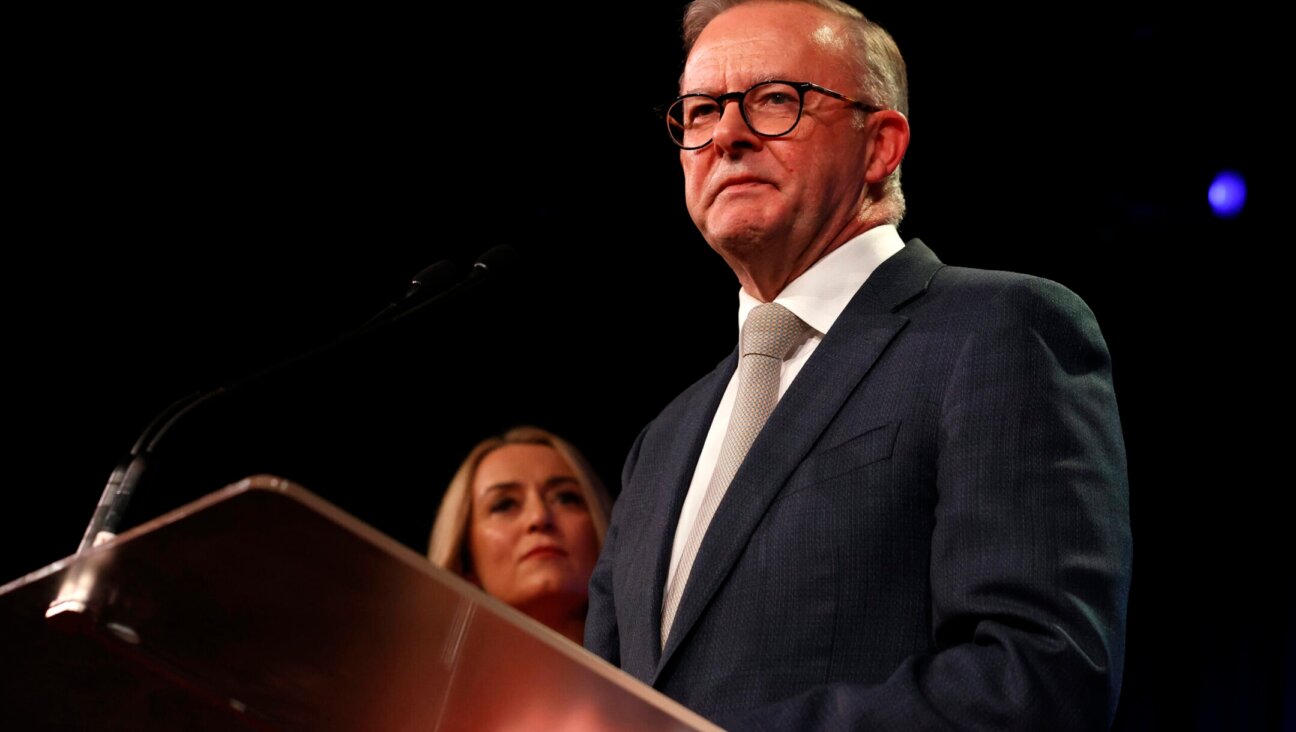A House of Good Repute?
THE SYNAGOGUE IN AMERICA: A SHORT HISTORY
By Marc Lee Raphael
NYU Press, 259 pages, $35
No aspect of American Jewish life has been more vilified over the past 40 years than the synagogue. The attack began when the Havurah movement marshaled the antiestablishment spirit of the 1960s youth culture against the postwar synagogue, and continues today in the form of so-called independent minyanim (prayer groups) that embody the widespread reluctance of young adults to identify with institutions of any kind. Charged by its critics with alienating Jews through narrow denominationalism, materialism and lack of spirituality, the American synagogue — at least its non-Orthodox sector — is also suffering from a drop in membership. And the current economic downturn is forcing many synagogues to curtail activities, postpone hiring clergy and merge with neighboring congregations.
It was not always thus, historian Marc Lee Raphael reminds us. Raphael, director of the Judaic studies program at the College of William & Mary, author of several earlier scholarly works and editor of “The Columbia History of Jews & Judaism in America” (Columbia University Press, 2009), acknowledges that probably at no time over the past two centuries have most American Jews belonged to synagogues, and that only a minority of members have attended with any degree of regularity. But he insists, nevertheless, that the synagogue “has been the most significant Jewish institution in the life of Jews,” and, in the teeth of those who claim to be bored by the services, he concludes that “nothing has been as central to the purpose of the synagogue as the sanctuary.”
Raphael’s account relies heavily on previously unexplored primary sources. Finding that published histories of synagogues and rabbinical biographies — both usually written by people with personal axes to grind — and even congregational websites are unreliable and contradictory, Raphael visited more than 100 synagogues of all denominations in every region of the country. There he rooted through uncataloged boxes containing minutes of board meetings, synagogue correspondence and, most significantly, congregational bulletins and newsletters, which often printed texts of rabbinic sermons and information about changes in synagogue practices. The result is a fascinating account of the evolution of synagogue organization, finances, architecture, prayer, music, educational and social activities, and much more.
The book begins with the Colonial Period, when the single (Sephardic) synagogue in town was synonymous with the Jewish community, and proceeds to the 19th century, when the large migration of Jews from Central Europe triggered a process of continual breakaway from existing synagogues and establishment of new ones on the basis of ritual custom, region of European origin or simple personal enmities.
Raphael shows how the large influx from Eastern Europe at the turn of the 20th century brought an even greater proliferation of synagogues. He also discusses the Americanization of synagogue practices and programs over subsequent decades and argues for marking the year 1967 as a watershed, after which congregations of all streams steadily ramped up ritual, increased the use of Hebrew, emphasized text study and prioritized spirituality, that slippery concept he defines as “open talk about the divine presence in people’s lives.”
Raphael’s careful mining of sources yields especially significant insights about denominational developments. The question of what constituted a “Reform” synagogue in late-19th-century America has given rise to great confusion: As Raphael shows, the same congregation at roughly the same time period was referred to by contemporaries as Orthodox or Reform. Raphael is clearly correct in claiming that such names had no precise definition at that time, and that a historian’s later assignment of a synagogue to one of the groupings we know today is anachronistic. He proposes a different model: Virtually all synagogues in the decades after the Civil War were “reforming,” whether by seeking to enforce decorum during services, introducing English prayers, installing organs, eliminating the second day of festivals or any of a host of other changes. Whether such reforms would result in a “Reform” synagogue could be known only toward the end of the century, Raphael argues, when adoption of the Union Prayer Book clearly identified a congregation as Reform.
Similarly, Raphael’s analysis clarifies the confusing identification of synagogues in the first half of the 20th century as alternatively Orthodox, Conservative or traditional. The source of the confusion, he writes, lies in our anachronistic assumption of a clearly defined Conservative movement before World War II, a time when a non-Reform synagogue’s affiliation with the Union of Orthodox Jewish Congregations of America or with the United Synagogue, which employed rabbinic graduates of the Jewish Theological Seminary, seems to have often been a matter of whim or accident.
The time Raphael spent doing research at synagogues across the nation also gave him the opportunity to see these houses of worship in operation, and the vitality he claims to have witnessed makes him doubt the naysayers. “The synagogue is in good health,” he reports.
Perhaps he should have spent more time tending to the scholarly apparatus of his book than on medical diagnosis. Sadly, the usefulness of “The Synagogue in America” is undercut by the absence of footnotes. Coming across a particularly piquant quotation or insightful passage and being unable to identify the source is frustrating, and the fact that Raphael gleaned much of his information from unmarked boxes in synagogue basements provides no justification, since at least the name of the synagogue and something about the particular document would enable others to track down the material.
Was this his bad idea or the publisher’s? Wherever the fault lies, it somewhat dims the luster of an otherwise brilliant new interpretation of American synagogue history.
Lawrence Grossman is director of publications at the American Jewish Committee.
















